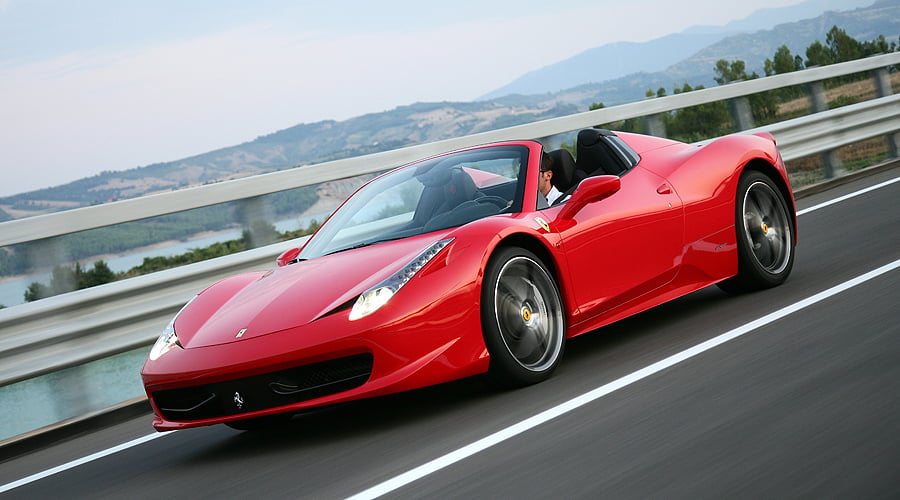
After the all-wheel-drive spatial miracle that is the Ferrari FF comes the supercar for the fresh-air pragmatist. Thanks to an aluminium hardtop, the 458 Spider is the marque’s first mid-engined coupé to offer open-top driving thrills.
A few years ago you would have described a Ferrari as emotional and racy, or perhaps moody and diva-ish – but practical? From Turin to Naples, the excitably opinionated Italians would have been collectively dropping their espresso cups. But Maranello has learned that emotion and everyday usability are not necessarily mutually exclusive. On the contrary, at a time when real men are not ashamed to chauffeur the children to school and then do a spot of organic food shopping, a real macho sports car must also be practical. Provided, of course, that at times it offers rather more than that. Much more. This is the promise of the 458 Spider unveiled at the recent Frankfurt Motor Show. To prove its point, Ferrari has rounded up a tiny group of journalists in Reggio Emilia in Northern Italy, where it’s the beginning of October and the climate is still balmy. Before the group embarks west towards La Spezia and the Mediterranean, the initial focus is on the theory.
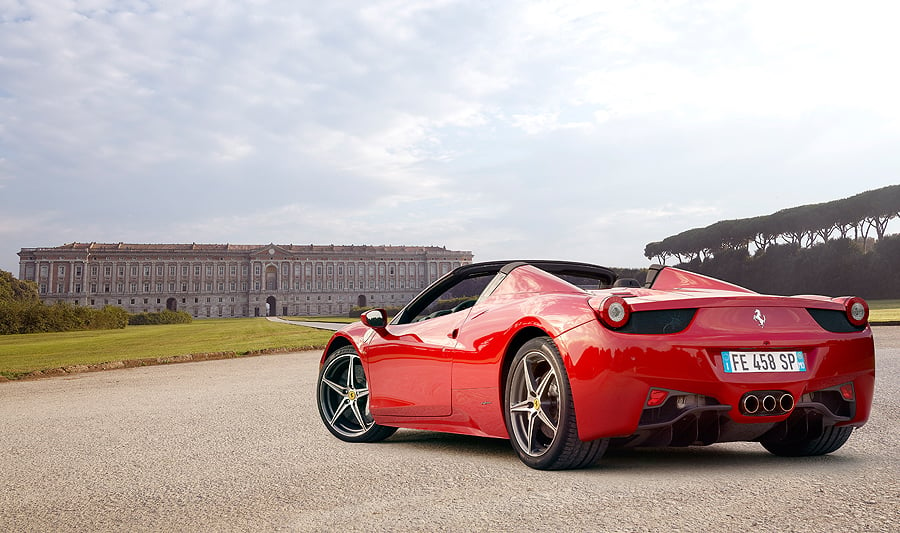
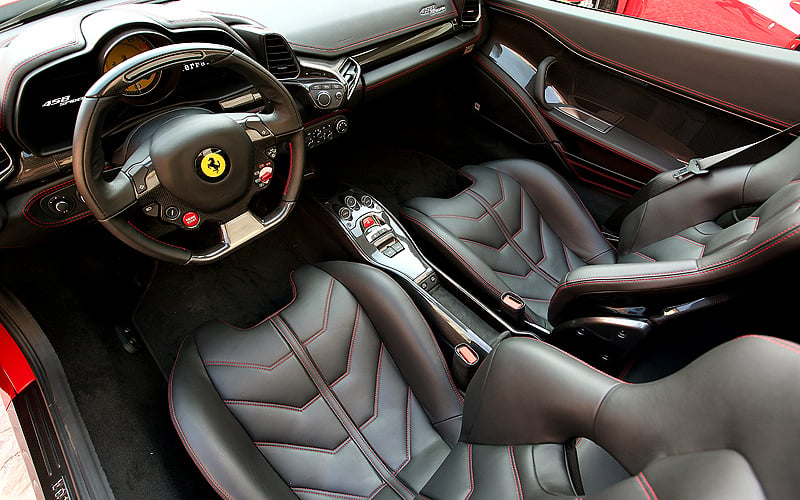
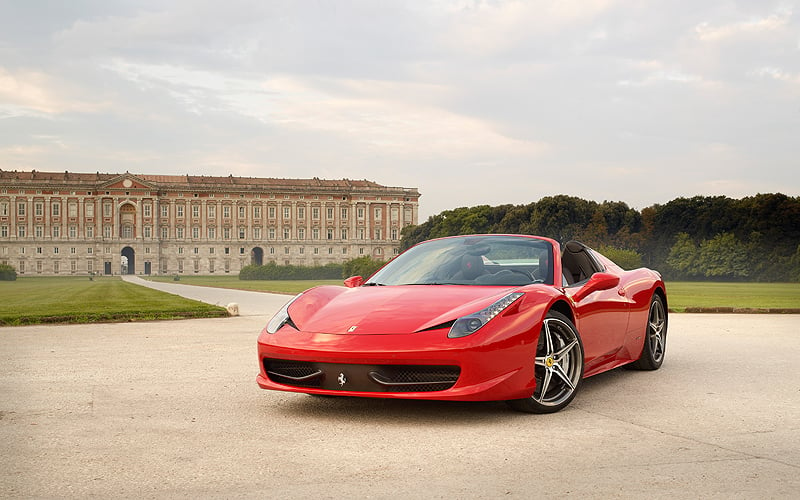
To outsiders, the innovation of the 458 Spider may seem limited. It still has the devilishly fast, but well-known V8 engine of the Ferrari 458 Italia, so the only notable change is a roof made of aluminium. So what? The BMW Z4 and Mercedes SL had this long ago. But the fabric top is a great tradition at Ferrari – Ferris Bueller’s 250 would only have been half as pretty with a metal roof. For many conservative Ferraristi, applying one to a Spider is tantamount to a coup d'état. Like it or not, however, the newcomer is the first mid-engined sports car with an automatic hardtop. Why has this not happened before? Because a cloth roof is typically much lighter than a roof made of metal, and usually takes up less room. However, the 458 Spider engineers have proven the opposite: the ingenious aluminium hardtop not only weighs 20kg less than the soft-top of the F430 Spider, its small footprint also creates additional storage space and opens up even faster. In just 14 seconds, the convincing coupé transforms into a roadster in such a way that it poses the question: why would anyone buy the fixed-head 458 Italia now?
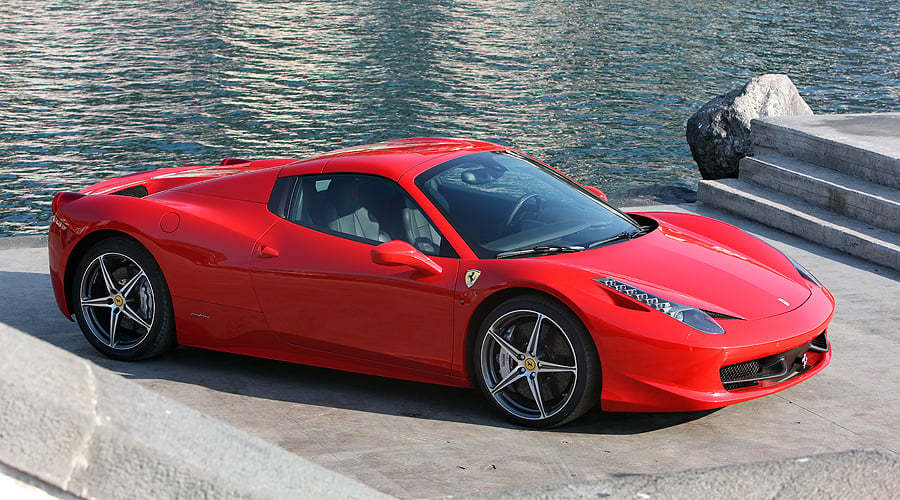
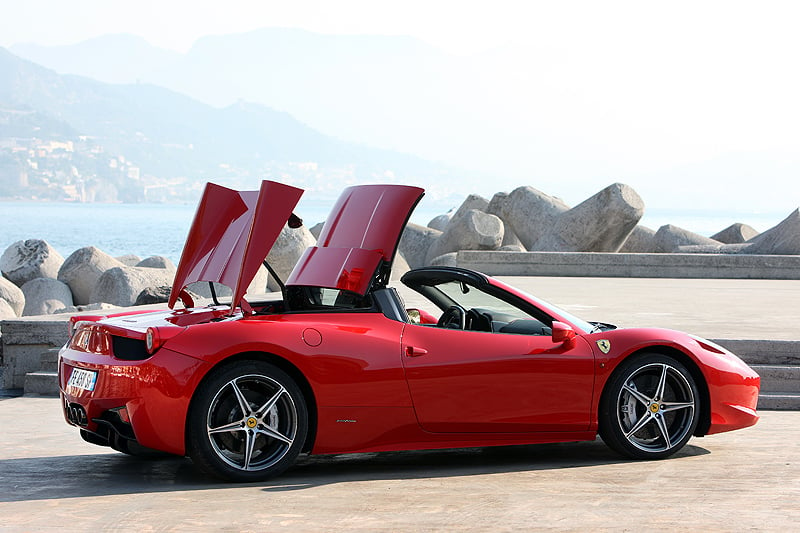
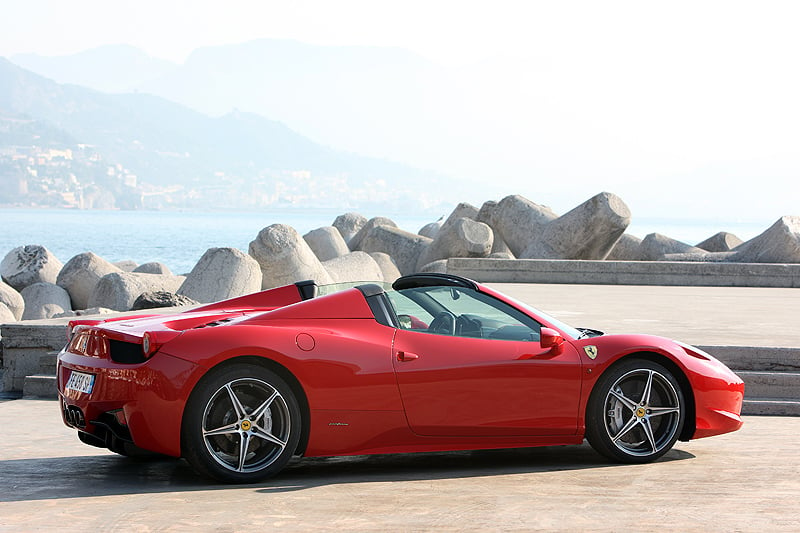
Of course, the idea is not entirely new. In 2005, Ferrari produced the 575 Superamerica, which had an electrochromatic glass roof that folded 180 degrees onto the rear deck of the front-engined car. A year earlier, the conceptual development of a retractable hardtop for a mid-engined car had been explored under the working title of 360 Aperta, but the concept never made it to market. 2006 saw the first functional simulation, on which the construction principles of the 458 Spider are now based: the C-pillars serve as a roll bar, and a frame for the glass, height-adjustable wind deflector and roof elements. The hardtop itself is an aluminium construction divided into two parts, and folds so cleverly that it only takes up 100 litres of space. Through the efficient use of the hardtop elements, the Spider weighs just 50kg more than the coupé – a soft-top solution would have cost the engineers about 25kg more and would have been less stabilising. Sounds convincing. But what ultimately makes a Ferrari, of course, is the emotion.
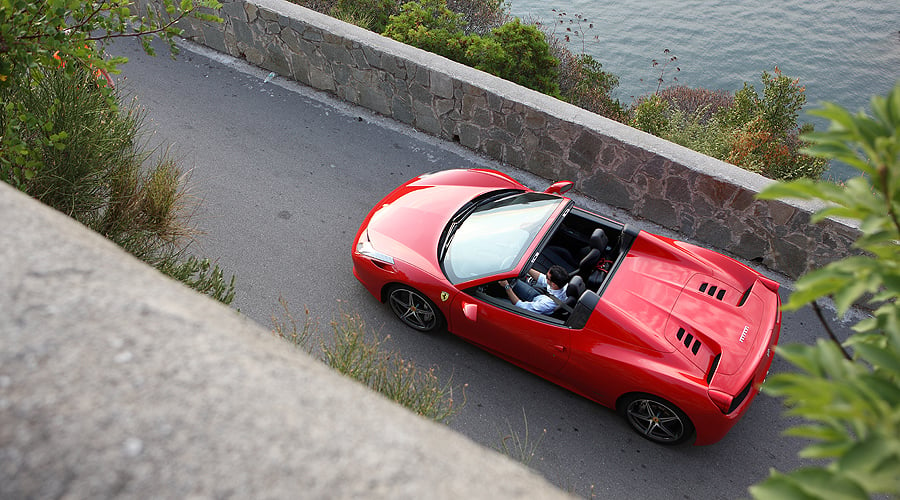
After caffè e cornetto, we take our first walk around the car. The glass panel which proudly displayed the magnificent eight-cylinder in the fixed-roof Italia is now gone; it was no longer possible with the Spider, due to the folding roof. While the F430 Spider actually looked like a convertible, the appearance of the 458 Spider is much more consistent with that of its weather-shy sibling and, if anything, looks more muscular. But the complexion yearns for some of the north Italian sun, and since it only takes one press of a button on the centre console for the hardtop to disappear into oblivion, we thought it’d be rude not to. However, this can only happen while static to prevent tension on the roof’s mechanicals; after all, 0-62mph does only take 3.4 seconds. Without a roof, and thanks to some small but effective changes in the exhaust system, the Spider is an auditory experience in itself. At last, we hear the V8 in its entire theatrical sonority, roaring then trumpeting. Anyone who turns on the stereo has completely missed the point.
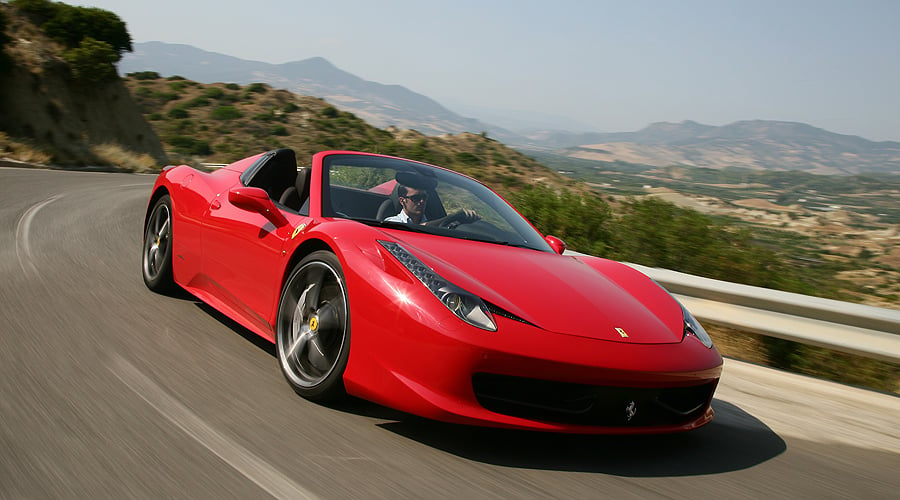
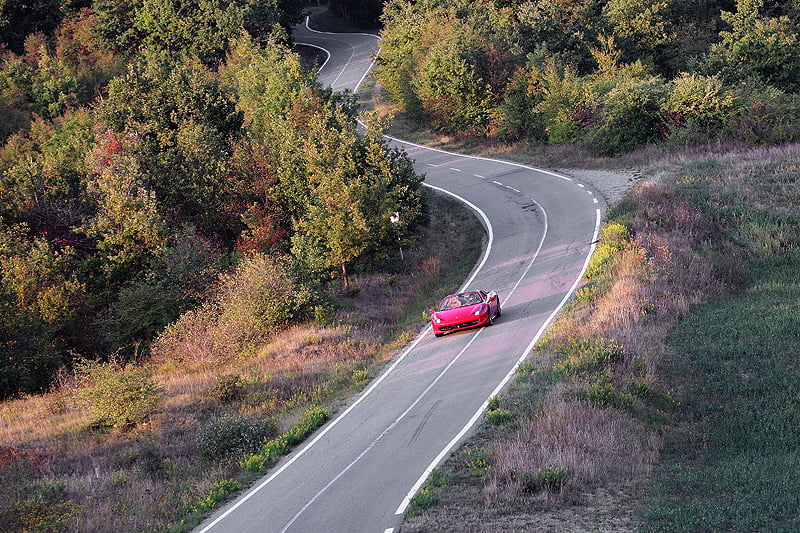
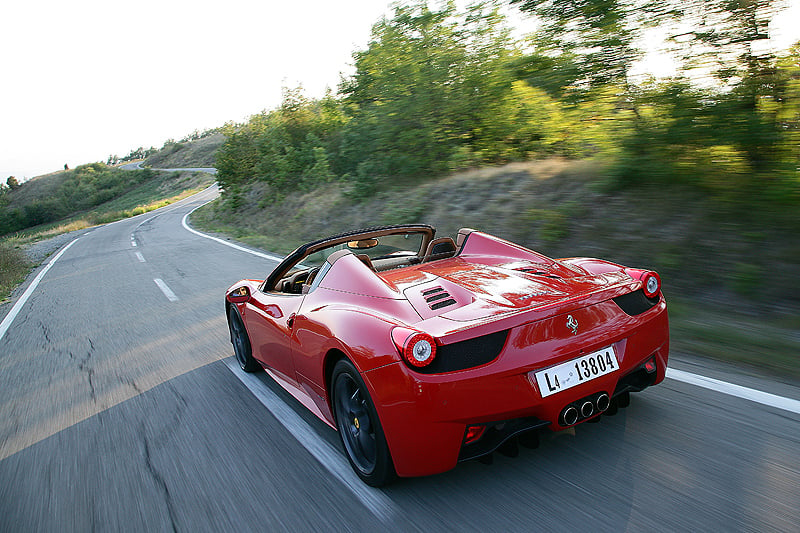
We travel across curvy roads and sunny hills, through shady pine forests and sharp hairpins, with oncoming traffic seldom interrupting progress. A perfect training ground for the Spider, then. At 9000rpm, the V8 brings all its 570HP into play – and with a phenomenal power-to-weight ratio of 2.5kg per HP, the supplemental 50kg over the coupé is thereby hardly noticed. Gearchanges can be performed automatically but, as you’d expect, manual operation is better, via the paddles connected to the seven-speed dual-clutch transmission from the FF. The Manettino mode of choice is ‘Race’ – with the appropriate suspension settings for rain and race track also at hand – and the carbon ceramic brakes ensure rapid deceleration before the tight bends. The driving dynamics are electrifying, especially when threading the Spider through the sharpest corners without trimming back on the accelerator.
But, of course, there's one thing the hard-topped Berlinetta cannot offer: the contact with nature. You thrust the Spider's nose into the deep pine woods, feel the cool autumn air, and speed back into the sun only seconds later.
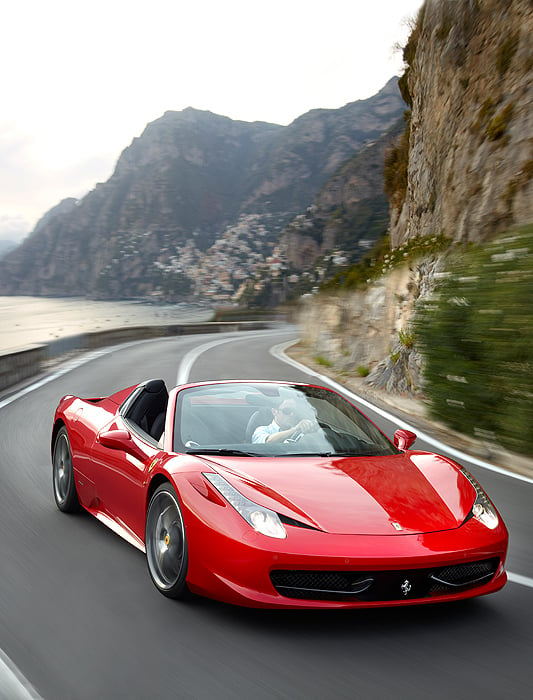
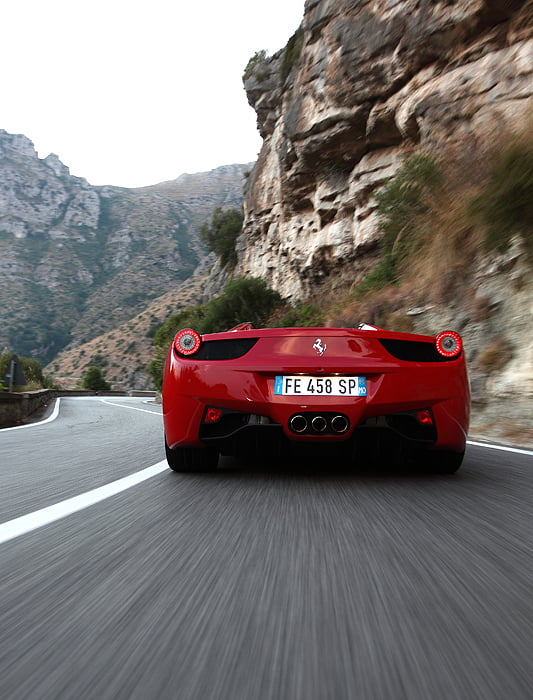
Although the average fuel consumption, compared with the coupé, has increased from 21.2mpg to 23.9mpg, this figure is only achieved by driving in seventh gear in fully automatic mode. Call upon the staggering performance of the engine and you will have to visit the fuel station more often. Thanks to a ‘HELE’ (‘High Emotion Low Emission’) package of measures, including an optional start-stop system and numerous small improvements, the CO2 emissions have been reduced by 20 per cent against the F430, to 275g/km. Maranello is currently working hard to improve the average emissions across its range, such as developing the first hybrid Ferrari – to be revealed at some point in the future.
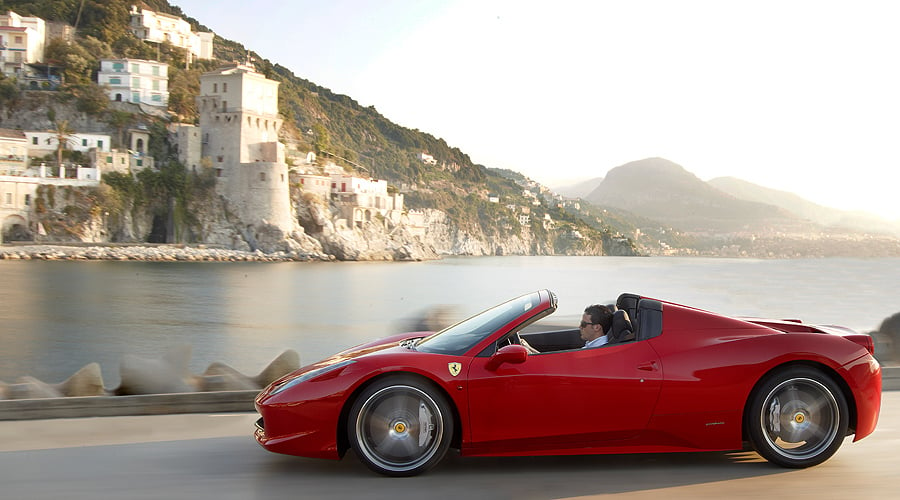
On our way towards La Spezia, we are disciplined enough not to challenge the specified top speed of 198mph – it would be unwise to test the brand loyalty of the traffic police this far from Maranello. Occasionally, the sound from the V8 defeats your self-control and urges you to press on, but a glance at the digital speed display ensures voluntary restraint is soon restored. The speedometer needs to be consulted often, as the aerodynamics of the Spider are designed in such a way that even with the roof down, you won’t immediately notice that you have surpassed a legal speed. As a result, long journeys with an open roof are no martyrdom, and storage space behind the seats allows for hand luggage; moving the seat closer to the steering wheel may even allow it to pass the golf bag test.
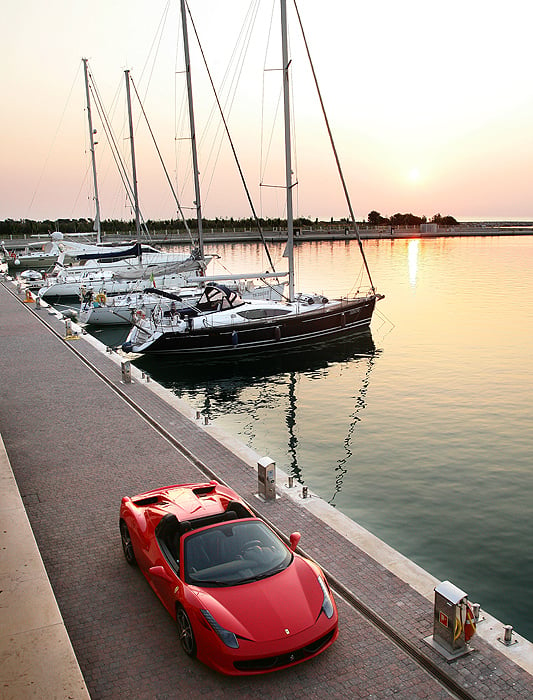
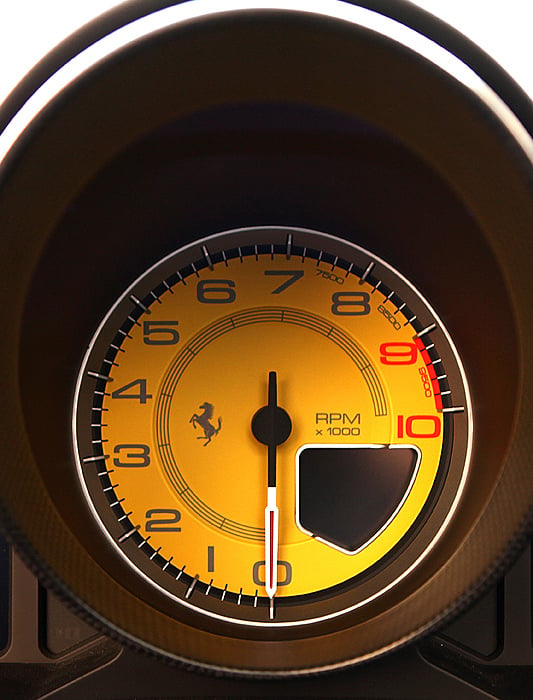
Arrival in Marina di Massa, a seaside resort between Carrara and La Spezia, was always going to feel premature. Here, the palm trees sway gently in the breeze and the Mediterranean sea glistens in the sun. It is low season, the boulevards are empty. This is the good life: an espresso in the morning glow on the beach, then a few hours with the Spider through the hinterlands to eat lunch, with a healthy appetite and mountains of pasta with fresh seafood. The Spider is a lifestyle – one whose membership requires you to choose the open-topped version ahead of the coupé.
Spider customers, we are told, are loyal: 60 per cent will upgrade to the new model. It's about the sound, the sportiness and, of course, the show. Unlike the coupé, the Spider is driven by about half its owners every day, which sweetens the beautiful, sunny places in the world where most typical owners spend their time. The 458 Spider is perhaps the ultimate Ferrari, as it combines mid-engine handling with Gran Turismo comfort, currently has no serious competition, and costs £198,856: worth every penny in our eyes.
You can find modern and classic Ferrari Spiders in the Classic Driver car market.
Text: Jan Baedeker
Photos: Ferrari
















